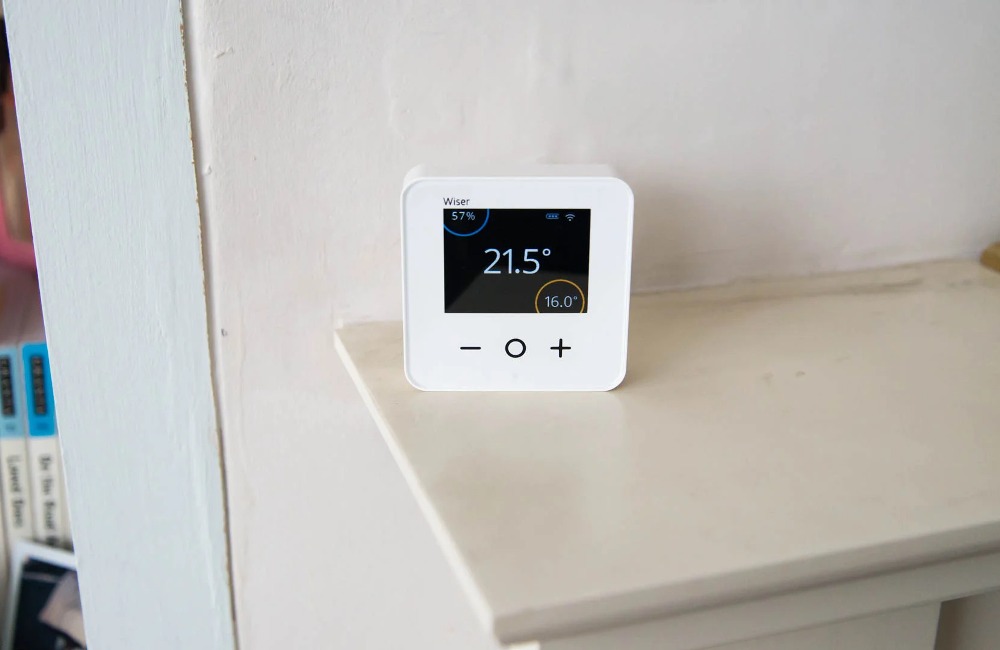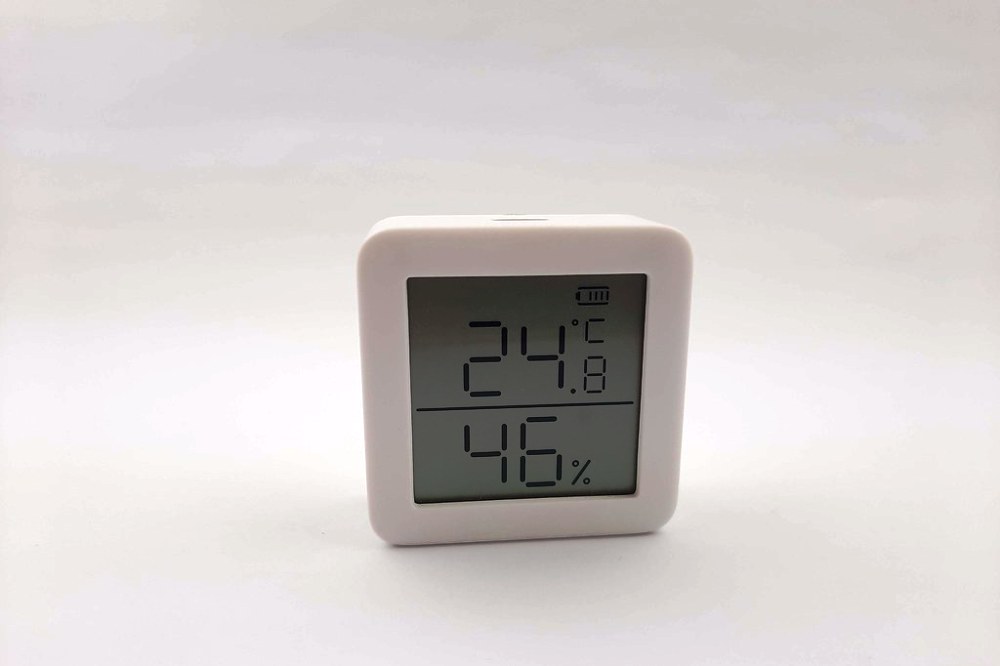
In a world where convenience meets innovation, smart home thermometers emerge as the game-changer. Gone are the days of traditional mercury thermometers that required manual readings. Enter the era of intelligent devices seamlessly integrating with your home environment to provide real-time temperature insights. Let’s delve into the realm of smart home thermometers and explore how they redefine comfort and health monitoring.
What is a Smart Home Thermometer?
Smart home thermometers are innovative devices equipped with sensors and connectivity features, designed to monitor and manage indoor temperature levels remotely. Unlike conventional thermometers, these futuristic gadgets sync with your smartphone or home automation system, offering convenience and control at your fingertips.
How Do Smart Home Thermometers Work?
These devices utilize advanced temperature sensors to measure ambient temperature accurately. Through Wi-Fi or Bluetooth connectivity, they transmit data to a designated mobile app or central hub, allowing users to monitor temperature variations in real-time. Some models even feature additional sensors for humidity, air quality, and weather forecasts, providing comprehensive environmental insights.
Smart home thermometers often employ a combination of temperature sensors and microprocessors to collect and process data. These sensors may include thermistors, infrared sensors, or thermocouples, depending on the device’s design and functionality. Once the temperature data is collected, it is transmitted wirelessly to a smartphone app or a central hub, where users can view and analyze the information.
Benefits of Smart Home Thermometers
Enhanced Convenience
Forget the hassle of manually checking temperature readings. With a smart home thermometer, you can effortlessly monitor indoor temperature levels from anywhere using your smartphone. Whether you’re at work or on vacation, stay informed and maintain optimal comfort levels for your home.
Precise Temperature Control
Achieve the perfect ambiance by fine-tuning your home’s temperature settings with precision. Smart thermostats offer programmable schedules and remote adjustments, ensuring efficient energy usage and personalized comfort for every member of your household.
Smart home thermometers allow users to set customized temperature schedules based on their daily routines and preferences. Whether you prefer a cozy environment during the evening or energy-saving settings while you’re away, these devices offer flexible programming options to suit your lifestyle.
Improved Energy Efficiency
By optimizing heating and cooling systems based on real-time data, smart home thermometers help reduce energy consumption and utility costs. Intuitive features such as occupancy detection and adaptive learning further enhance efficiency, contributing to a greener and more sustainable lifestyle.
Smart home thermometers leverage advanced algorithms to analyze temperature trends and user behavior, allowing them to adjust heating and cooling systems for optimal energy efficiency. By minimizing energy waste and optimizing resource usage, these devices help homeowners save money on utility bills while reducing their environmental footprint.
Health Monitoring
Beyond comfort, these devices play a crucial role in health monitoring, especially for vulnerable individuals such as infants or the elderly. By tracking temperature fluctuations, smart home thermometers provide early warnings for potential health risks, empowering users to take proactive measures and seek medical assistance if necessary.
Smart home thermometers offer valuable insights into indoor air quality, humidity levels, and temperature fluctuations, which can impact respiratory health and overall well-being. By monitoring these factors, users can identify potential health hazards such as mold growth, allergens, or inadequate ventilation, and take appropriate measures to mitigate risks.
Choosing the Right Smart Home Thermometer
Connectivity Options
Ensure compatibility with your existing smart home ecosystem, whether it’s Wi-Fi, Bluetooth, or Zigbee. Seamless integration enhances user experience and allows for centralized control.
When selecting a smart home thermometer, consider the compatibility with your existing smart home devices and platforms. Some thermometers may require a specific hub or gateway to connect to your home network, while others offer direct integration with popular smart home platforms such as Amazon Alexa or Google Assistant.
Accuracy and Calibration
Opt for devices with reliable temperature sensors and calibration mechanisms to ensure accurate readings. Look for certifications or user reviews validating the product’s performance.
Before purchasing a smart home thermometer, research the accuracy and reliability of its temperature sensors. Look for devices with high-quality sensors that are calibrated for precision and consistency. User reviews and independent testing can provide valuable insights into the device’s performance and accuracy.
Additional Features
Evaluate supplementary features such as humidity monitoring, air quality analysis, and compatibility with voice assistants. Choose a smart home thermometer that aligns with your specific needs and preferences.
Consider the additional features offered by smart home thermometers, such as humidity sensors, air quality monitors, and weather forecasts. These features can provide valuable insights into your indoor environment and help you maintain a comfortable and healthy home. Look for devices that offer customizable alerts and notifications, so you can stay informed about changes in temperature or air quality.
Installation and Setup
Positioning
Place the thermometer in a central location away from direct sunlight, drafts, or heat sources, ensuring accurate readings representative of the overall indoor environment.
Proper positioning is crucial for accurate temperature readings. Avoid placing the thermometer near windows, doors, or vents, as these areas may experience temperature fluctuations. Instead, choose a central location in your home where the thermometer can measure the ambient temperature without interference.
Connectivity
Follow the manufacturer’s instructions to connect the device to your home network and smartphone app. Ensure a stable Wi-Fi or Bluetooth connection for seamless operation.
Most smart home thermometers require a Wi-Fi or Bluetooth connection to communicate with your smartphone or home automation system. Follow the setup instructions provided by the manufacturer to connect the device to your home network and configure it with the accompanying app. Make sure to choose a secure network and password to protect your privacy and prevent unauthorized access.
Calibration
Calibrate the thermometer according to the provided guidelines to maintain precision and reliability. Regular recalibration may be necessary to account for environmental changes or sensor drift.
Calibration ensures that the thermometer provides accurate readings over time. Follow the manufacturer’s instructions to calibrate the device using a reference thermometer or calibration tool.
Keep in mind that environmental factors such as temperature fluctuations and humidity levels can affect the accuracy of the thermometer, so it’s essential to recalibrate it periodically to ensure reliable performance.
Future Trends and Innovations
The evolution of smart home thermometers continues with ongoing advancements in technology and design. From AI-powered predictive analytics to eco-friendly materials, the future holds exciting possibilities for enhancing comfort, health, and sustainability in modern households.
As technology continues to evolve, smart home thermometers are expected to incorporate more advanced features and capabilities. Artificial intelligence algorithms may enable predictive analytics, allowing the devices to anticipate temperature changes and adjust settings automatically. Additionally, advancements in sensor technology and materials science may lead to the development of more accurate and energy-efficient thermometers that are better suited to the needs of modern homeowners.
Conclusion: Embrace the Smart Home Revolution
As we embrace the era of interconnected devices and intelligent automation, smart home thermometers stand out as essential tools for optimizing comfort, energy efficiency, and health monitoring. With their user-friendly interfaces and innovative features, these devices empower homeowners to create personalized environments tailored to their preferences and lifestyle. Say goodbye to guesswork and hello to a smarter, healthier home.

FAQs
Can I control a smart home thermometer remotely?
Yes, most smart home thermometers offer remote control via smartphone apps or compatible home automation systems, allowing you to adjust temperature settings from anywhere with internet access. Additionally, some models may also allow you to set up schedules and receive alerts for temperature changes, further enhancing convenience and control.
Are smart home thermometers compatible with voice assistants like Alexa or Google Assistant?
Many smart home thermometers integrate seamlessly with popular voice assistants, enabling voice commands for temperature adjustments, weather updates, and other functions. With voice control capabilities, you can effortlessly manage your home’s temperature settings using simple voice commands, adding another layer of convenience to your smart home experience.
Do smart home thermometers require professional installation?
In most cases, smart home thermometers are designed for DIY installation, with step-by-step guides provided by the manufacturer. However, if you’re unsure or encounter difficulties, professional installation services are available. Professional installation may be recommended for complex setups or integration with existing HVAC systems, ensuring proper installation and functionality.
Can smart home thermometers help me save on energy bills?
Absolutely! By optimizing heating and cooling systems based on real-time data and user preferences, smart home thermometers help reduce energy consumption and utility costs over time. By monitoring temperature trends and adjusting settings accordingly, these devices help minimize energy waste and promote efficient use of resources, ultimately leading to cost savings on your energy bills.
Are smart home thermometers safe for use around children and pets?
Yes, smart home thermometers are designed with safety in mind and pose no significant risks to children or pets when installed and operated according to the manufacturer’s guidelines. Always ensure cables and components are securely mounted and out of reach. Additionally, choose models with childproof features or tamper-resistant designs for added peace of mind in households with young children or curious pets.
